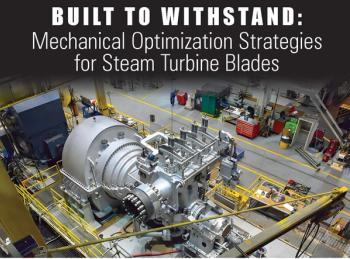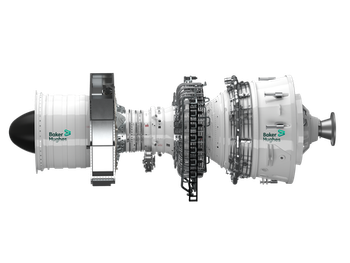
Compressor market: Boom in power generation may offset slump in oil and gas
Low oil prices have harmed many industries where pumps and compressors are regularly sold, but power generation and other markets still offer plenty of opportunities for manufacturers to recoup lost revenue. The oil & gas and power industries vary in their allocation of capital expenditures (CapEx) depending on where they are.
Figure 1: The size of each disc represents the relative amount of CapEx within each segment per region[/caption]
Figure 1 highlights the importance of these industries across the Americas, Asia-Pacific (APAC), and Europe, Middle East, and Africa (EMEA). It is also important to note that the Asia-Pacific region accounts for more heavy industry investment than the American and EMEA regions combined as of the third quarter of 2016 (Figure 2).
Figure 2: Asia Pacific spends more on heavy industry now than Europe, the Middle East the Americas combined[/caption]
Most notably — and in parallel with the steep decline of oil prices — investment activity has largely waned throughout the industrial automation equipment market, especially for pumps, compressors, motors, drives, generators, fans, blowers, and other equipment involved in the energy sectors. Waning investment activity has harmed some suppliers because the depressed commodities market led customers to request substantial discounts on heavy equipment, thereby negatively affecting the profitability of machinery producers. Within the past 18 months, standardized pumps and gas compressors have been sold at up to 40% discount to customers in the energy sector. Partly negating this revenue loss for vendors is a customer- driven push for customized products designed to reduce energy spending and environmental waste.
In an effort to counteract the negative effects weak oil prices have had on the overall state of the pump and compressor market, suppliers have become more creative, in terms of product development, marketing and overall offerings. As energy efficiency and lifecycle cost management have taken precedence over initial installation costs, suppliers of pumps and gas compressors have increased R&D expenditures by an average of 2% to determine the best way to deliver products that meet those expectations. The industrial internet of things IIoT has introduced the concept of “smart manufacturing” in which sensors monitor pumps and compressors and alert plant operators when errors occur. As expensive as pumps and compressors are to purchase and install, downtime and regular maintenance costs account for the majority of end users’ lifetime expenses for these products. Therefore manufacturers are seeking innovative ways to offer more than just a product to customers.
Although sales volumes for pumps and gas compressors have declined, many leading suppliers have offset these losses with alternate revenue from service contracts. These contracts include regular monitoring of pump and compressor packages that use sensors and other smart technology to offer predictive maintenance to ensure uptime and more efficiency. Lower oil prices are affecting oil and gas development, leading to stricter measures in CapEx. For pumps and gas compressors specifically, the upstream segment has been the hardest hit, whereas strong investment is still occurring in onshore pipeline and refining applications.
Pump and compressor demand from upstream production has suffered from sharp cutbacks, and it is not forecast to rebound until late 2017. For North American exploration and production (E&P) in particular, the financial situation is alarming. Financial impairments (writing off goodwill) reached nearly $180 billion in 2015, compared to about $40 billion in 2008 and 2009. These charges are deteriorating both financial and operational performance, as they affect net income, return on capital, and finding and development metrics. This situation has hampered the development of onshore production facilities, as well as the sale of pumps and gas compressors in these facilities.
Figure 3: Pump and compressor demand is expected to remain largely flat[/caption]
While the low price for oil is a prohibitive factor in upstream oil and gas development, midstream applications will be affected less than others. In fact, rising demand for natural gas has made it less likely that gas expansion projects will be delayed any longer (Figure 3).
While the low price for oil is a prohibitive factor in upstream oil and gas development, midstream applications will be affected less than others. In fact, rising demand for natural gas has made it less likely that gas expansion projects will be delayed any longer (Figure 3).
Rest of the article is in the Turbomachinery Handbook 2017
Preston Reine is Senior Analyst and Group Manager at IHS Markit’s IHS Manufacturing Technology group. His areas of expertise include motors and motor-driven systems such as pump, fan and compressor applications. He holds a BBS in Finance from Saint Edward’s University. For more information, visit www.ihs.com or email preston.reine@IHSmarkit.com
Newsletter
Power your knowledge with the latest in turbine technology, engineering advances, and energy solutions—subscribe to Turbomachinery International today.





